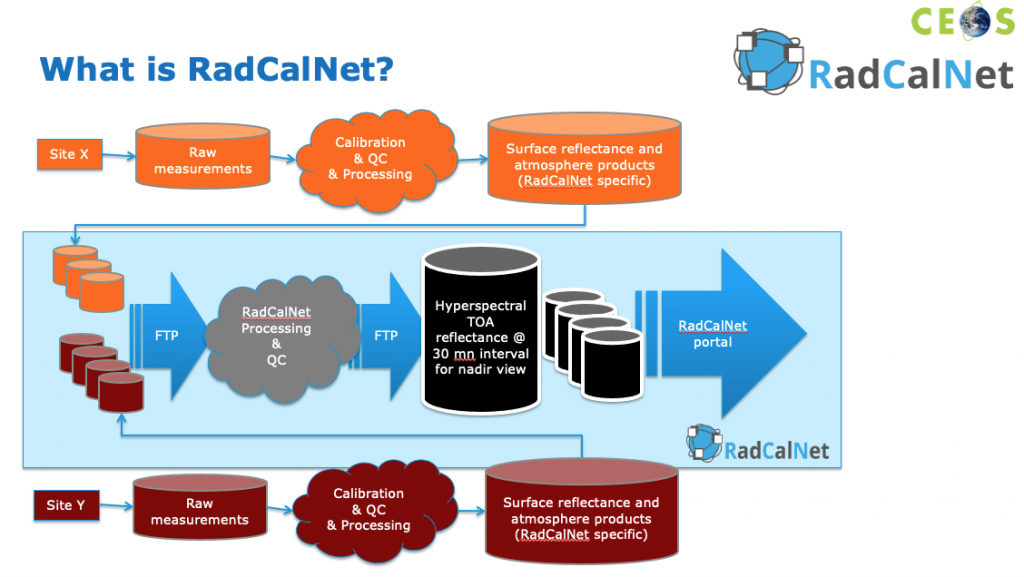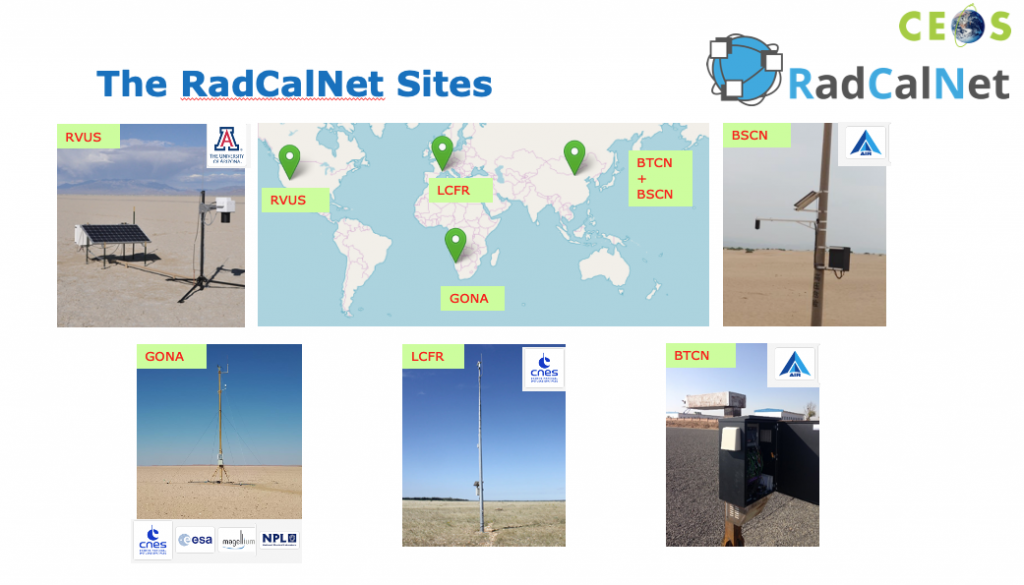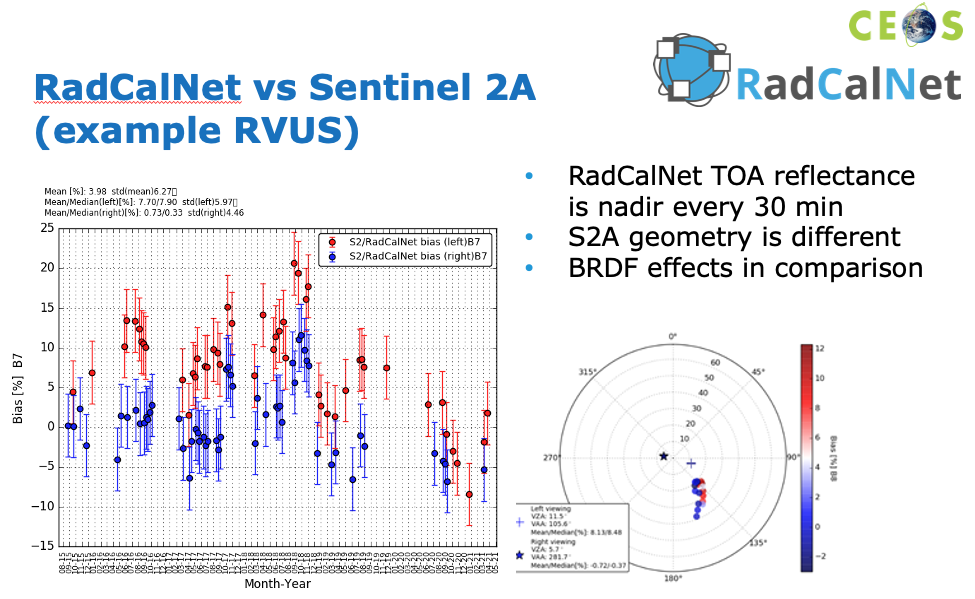The CEOS WGCV addresses the need for standardizing how different data sources are combined to ensure interoperability among existing and future Earth Observing systems. The Working Group also promotes the international exchange of technical information and documentation, joint experiments, and the sharing of facilities, expertise, and resources. This makes the WGCV the focal point for all things related to calibration and validation in the international user community.
(Calibration is the process of quantitatively defining a system’s response to known and controlled signal inputs. Validation, on the other hand, is the process of assessing, by independent means, the quality of the data products derived from those system outputs.)
One major and very active initiative of the WGCV Infrared and Visible Optical Sensors (IVOS) Subgroup is the Radiometric Calibration Network (RadCalNet).

The RadCalNet service provides satellite operators with consistent, SI-traceable uncertainties, Top-of-Atmosphere (TOA) spectrally-resolved reflectance products over several sites around the world from one common web portal and through a common processing chain operated by NASA – aiding its users in the post-launch radiometric calibration and validation of optical sensors onboard Earth Observation satellites.
This free and open access service provides:
- a continuously updated archive of TOA reflectances derived over a network of sites
- at a 10 nm spectral sampling interval
- in the spectral range from 400 nm to 2500 nm
- at 30 minute intervals.
Each individual site is managed independently and equipped with automated ground instrumentation that makes continuous measurements of both surface reflectance and the local environmental/atmospheric conditions needed for the derivation of TOA reflectance values.

These TOA reflectances are derived from the individual site’s surface and atmosphere measurements using a common method through a central processing system. In addition, each member site takes responsibility for the quality assurance of the surface/atmosphere measurements provided and is subject to peer review and rigorous comparison, underpinned by the United Kingdom’s National Physical Laboratory (NPL) National Metrology Institute, to ensure site-to-site consistency and SI traceability (in alignment with the principles of the Quality Assurance Framework for Earth Observation, QA4EO.

There are currently five instrumented reference test sites (with more in preparation):
- Railroad Valley Playa, USA, operated by the University of Arizona
- La Crau, France, operated by the French Space Agency, CNES
- Baotou, China (two sites), operated by the Chinese Academy of Opto-electronics
- Gobabeb, Namibia, operated by The European Space Agency (ESA) and CNES
Space agencies and commercial operators routinely use RadCalNet to validate their calibration approaches, but also in operational mode to calibrate sensors without on-board calibration devices.

RadCalNet’s continuously updated archive of high quality TOA reflectance data made available by these sites are open and accessible on the RadCalNet Web Portal via simple registration. The portal also provides extensive documentation on how to become a RadCalNet Site, uncertainty analyses, membership criteria, and more.
The RadCalNet working group will host their 12th meeting on September 30th, 2021 to discuss the further evolution of the RadCalNet service and improvement of the data quality. Visit the RadCalNet Web Portal or contact RadCalNet Admin for more information.
For more information about the overall mission and objectives of the CEOS Working Group on Calibration & Validation (WGCV), please have a look at the WGCV Terms of Reference. Information about current and upcoming WGCV activities are outlined within the overall CEOS 3-Year Work Plan (for the period 2019-2021). Please also feel free to contact the WGCV Chair for more information or to be added to the WGCV mailing list.

A big thank you to the following WGCV / RadCalNet leaders/members for their contributions to this article:
- Philippe Goryl and Mark Bouvet (ESA)
- Akihiko Kuze (JAXA)
- Nigel Fox (NPL)